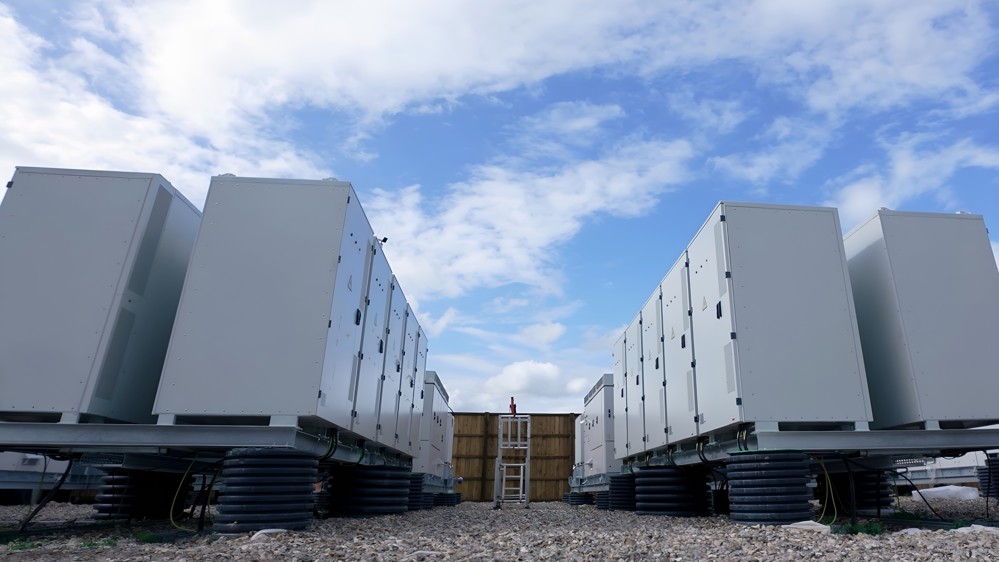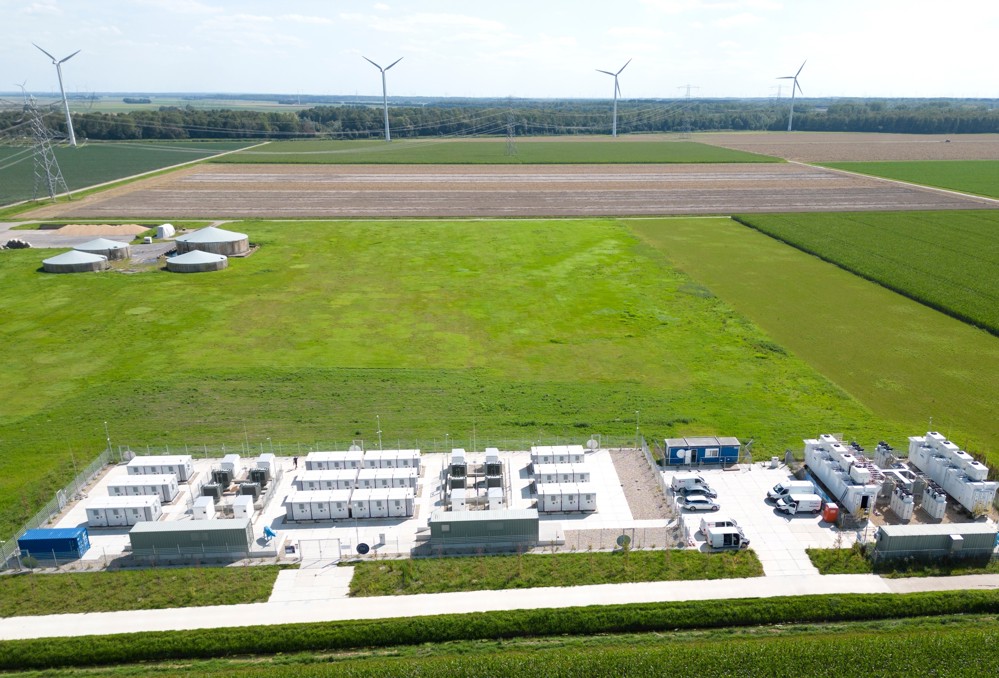Sam Sheppard, Senior Communications and Campaigns Manager
06/08/2025 | Energy storage


Why battery energy storage systems are crucial to the UK’s clean power future
6 August 2025
Battery energy storage systems are playing an increasingly critical role in our electricity system – helping to manage the constant changes in electricity demand and generation, the latter of which is the inevitable result of having more wind and solar farms providing our power. Ultimately, the increased efficiencies which come from having greater volumes of battery storage on the system result in a lower cost system for billpayers.
How do battery storage systems work?
Batteries allow energy to be stored. Most often, this will be when electricity supply exceeds demand, such as during periods of high winds or strong sunlight, before the energy is released later when it is needed. By helping to smooth periods of intermittency in renewable energy generation, batteries play a key role in accelerating the phase out of fossil fuels and achieving a stable, lowest cost, clean future system.
In its Clean Power 2030 Action Plan, the Government estimated that between 23GW and 27GW of battery storage will be required by 2030, which represents a significant increase from approximately 4.5GW in 2024.
Explore our new event
Are they simple to build?
Although the construction time for BESS projects is relatively fast, with many being completed in six to 12 months due to their modular design, the development and planning phase can typically extend over a year or more. This is due to the need for careful site selection and feasibility studies, securing both planning permission and a grid connection, as well as noise and environmental impact assessments, particularly when being built near residential or urban areas. As part of this process, planning authorities often impose conditions relating to visual screening (such as planting trees and erecting fencing), the colour and height of enclosures, and lighting control to reduce light pollution.
Installing a grid-scale battery storage project requires planning consent. As planning is a devolved matter, requirements differ across the UK. In England and Wales, all battery storage projects are assessed by local planning authorities, regardless of size. In Scotland and Northern Ireland, consent may be granted by ministers or planning authorities, depending on the project’s capacity. Battery storage facilities also require a generating licence, which is issued by Ofgem in Great Britain and the Utility Regulator in Northern Ireland.
Whilst there is no statutory obligation in the UK for battery storage projects to offer community benefit funds (CBFs), many developers offer one-off payments to help secure local support and demonstrate social responsibility, or community benefit packages as part of a co-located scheme.

Are they safe?
Thankfully, safety incidents involving battery storage facilities are rare. However, concerns remain around the potential fire risk of lithium-ion batteries, particularly due to a process known as ‘thermal runaway’, where a damaged battery cell overheats. Batteries have a wide range of applications and, as costs have fallen and their power has increased, we have seen the rise of battery powered cycles, or e-bikes. When these are overcharged, or involved in road accidents, it can damage the battery cells and make them more vulnerable to fire. However, battery storage facilities are designed to high specifications, and thus far more tightly managed.
Thanks to advances in safety features and lessons learned from the industry, grid-scale battery enclosures can be designed with flame resistance walls and spacing on site to prevent fire propagation. Most battery storage sites now are designed with robust fire detection and suppression systems with the full range safety measures outlined in Battery Safety Management Plans usually submitted at the planning stage. Although there is currently no centralised, publicly accessible record of battery storage-related fires in the UK, two known incidents include a fire at a site in Liverpool in 2020, and another at a project in Essex in 2025. In short, such incidents are very rare and extensive measures are taken to protect the public from any risks caused by them.
How are they regulated?
The Government has stated that battery storage projects are subject to a ’robust regulatory framework‘ and, whilst there is no standalone legislation dedicated solely to battery storage safety, there is a framework of applicable laws which cover product safety, fire safety, and occupational health standards. For example, the Health and Safety Executive maintains a dedicated webpage for grid-scale battery energy storage systems, which brings together relevant regulations. Additionally, the Government released updated guidance on health and safety for electrical energy storage in April 2024.
Industry bodies and local authorities have long called for fire and rescue services to become statutory consultees in planning applications for batteries. Partly in reaction to this, in August 2023, Government issued guidance encouraging developers and planning authorities in England to consult their local fire and rescue service when preparing or reviewing proposals for battery storage projects, as a precautionary measure to demonstrate best practice.

What are the challenges to their growth?
A number of key barriers to battery storage deployment exist in the UK, including high upfront capital costs (although these are expected to come down with economies of scale as more are built), uncertain revenue streams, and lengthy delays to grid connections. There are also strategic concerns over the UK’s domestic battery manufacturing capacity and its dependency on imported critical minerals such as lithium. To address these issues, the Government has published both a UK battery strategy and a critical minerals strategy, with the latter due to be revised and re-issued later this year.
As noted above, batteries will play a vital role in providing flexibility to the grid, and the Clean Flexibility Roadmap sets out more detail about the role batteries will play and how they should be managed. Alongside this, the Government is working with Ofgem to introduce a cap and floor revenue support scheme for long duration electricity storage (LDES), which will encompass battery storage technologies. This scheme will offer revenue stability by guaranteeing a minimum revenue stream (the floor) and limiting excessive earnings (the cap). Ofgem plans to approve the first projects under this scheme by spring 2026.
In conclusion
Battery storage systems are both safe and high regulated, and are essential technologies to deliver the resilient, low-carbon power grid that can support the UK’s net zero goals. Although regulatory, financial and supply chain challenges remain, ongoing innovation and targeted Government support is helping to unlock the full potential of this critical technology.
For in-depth insights into the battery energy storage project pipeline in the United Kingdom, visit RenewableUK’s EnergyPulse market intelligence platform.



